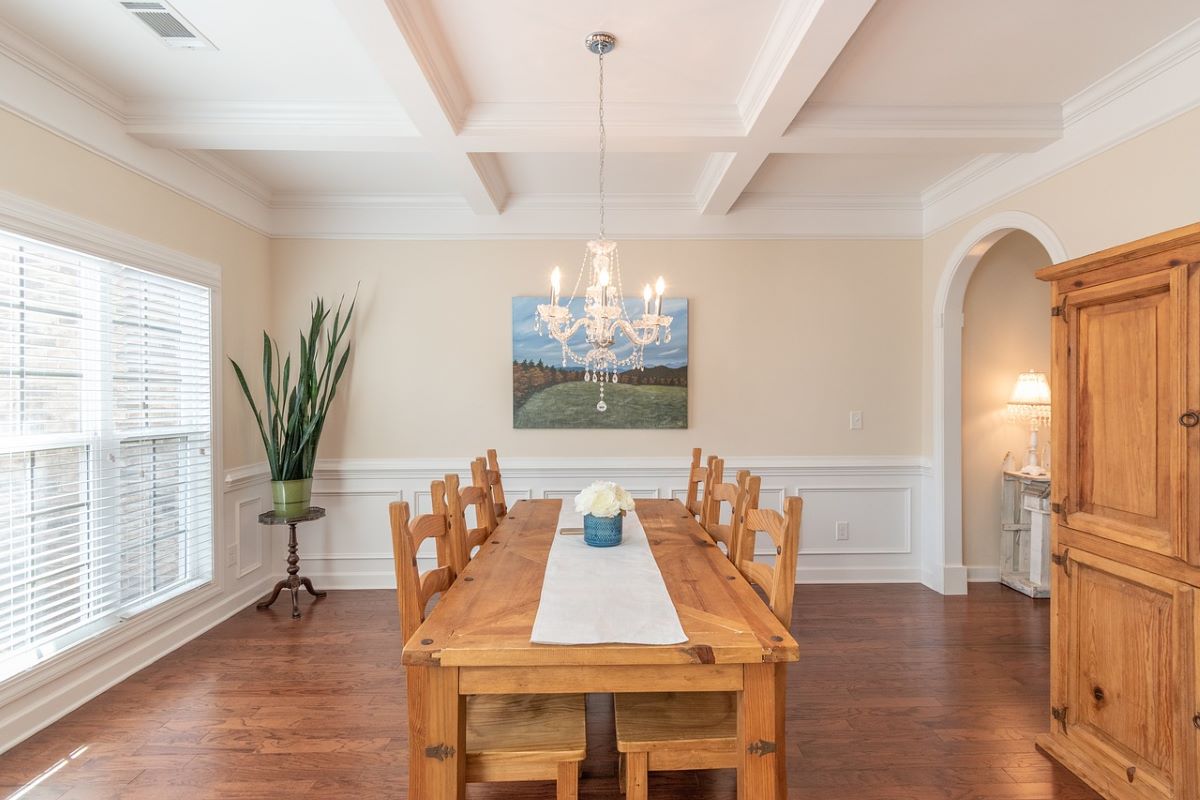
When we think about interior design, our attention often gravitates towards the walls, furniture, and flooring. However, there’s a fifth dimension to consider – the ceiling. Often overlooked, the ceiling plays a crucial role in shaping the overall aesthetic and functionality of a space. Thoughtful ceiling design is not only visually appealing but can also transform the way we perceive and experience a room. Here, we’ll delve into the significance of such design and explore how it influences our surroundings.
Beyond the Fifth Wall

The ceiling is not a fifth wall of a room that can easily be ignored when it comes to design. Just as walls serve as canvases for art and expression, the ceiling offers a unique opportunity to infuse creativity and personality into a space. Whether it’s through intricate moulding, innovative lighting fixtures, or even a splash of vibrant colour, the ceiling can serve as a captivating focal point that draws the eye upward.
In contemporary interior design, the trend of using the ceiling as a canvas has gained momentum. From coffered ceilings that add depth and texture to minimalist designs that promote a sense of spaciousness, the possibilities are endless. Architects and designers have started to realise that the ceiling is not just a utilitarian surface but an opportunity to elevate the entire design concept.
Spatial Perception and Beyond
Ceiling design goes beyond aesthetics; it has a profound impact on how we perceive and experience a room’s dimensions. Cleverly designed ceilings can visually alter the perception of height, width, and overall spatial layout. For instance, a lower ceiling with vertical stripes can create an illusion of height, making a room feel more expansive. Conversely, a high ceiling can be made to feel cosier and intimate through the use of warm colours and well-placed lighting.
Additionally, thoughtful ceiling design can be used to guide attention within a space. Strategically placed elements like chandeliers or pendant lights can serve as visual cues, leading the gaze towards specific areas of interest. This not only aids in enhancing the aesthetics but also aids in organising the functional layout of a room.
Lighting and Ambiance
Ceiling design and lighting go hand in hand. The type and placement of lighting fixtures on the ceiling can drastically alter the mood and ambience of a space. Soft, diffused lighting from recessed fixtures can create a calming and cosy atmosphere, perfect for bedrooms or lounges. On the other hand, bold and directional lighting can add drama and excitement to areas like dining rooms or galleries.
Skylights and clerestory windows are also part of ceiling design and have a profound impact on the interior environment. They introduce natural light, connecting the indoors with the outdoors and influencing our circadian rhythms. Thoughtful placement of these elements can maximise the benefits of natural light while controlling glare and heat gain.
Integrating Functionality
Integrating functionality seamlessly into the design is a hallmark of thoughtful ceiling design. In commercial spaces, the incorporation of a metal suspended ceiling can offer a dual advantage, enhancing both aesthetics and acoustics. This suspended ceiling system not only adds a touch of modernity but also optimises sound quality, contributing to a more comfortable and productive environment. In residential settings, a suspended ceiling system can be creatively employed to balance style and practicality, accommodating lighting fixtures and concealing wirings effectively.
Cultural and Historical Influences
Ceiling design is often influenced by cultural and historical contexts. In grand palaces, you might find ornate plasterwork and frescoes reflecting the opulence of a bygone era. Conversely, modern minimalist homes might feature clean lines and unadorned surfaces, echoing a more contemporary sensibility.
Cultural elements also come into play. In temples and mosques, intricate geometric patterns on the ceiling are not just decorative but imbued with spiritual symbolism. In traditional Japanese architecture, exposed wooden beams create a connection with nature and celebrate craftsmanship.
All in all, as we consider the significance of thoughtful ceiling design, it becomes evident that it’s much more than just an overhead surface. It’s a canvas waiting to be painted with creativity and innovation. From altering our spatial perception to influencing the ambience and functionality of a space, the ceiling holds incredible potential. So, the next time you step into a room, remember to cast your gaze upwards – you might just find the inspiration that transforms the way you view interior design.




